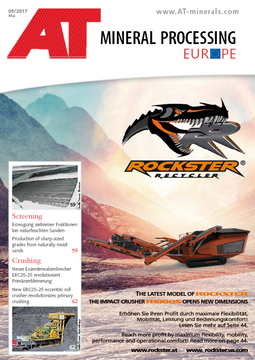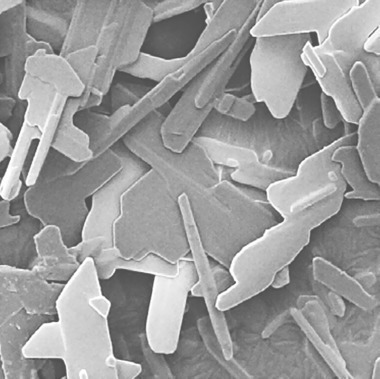Gypsum (not) only for construction
Under this motto, some 120 attendees from 14 different countries gathered in Weimar for the latest biennial Weimar Gypsum Conference, from 14 to 15 March 2017. Now, for the third time around, the event was hosted in the tried-and-tested fashion by the F. A. Finger Institute for Building Material Science (FIB) at Weimar Bauhaus University and Bauhaus Academy of Professional Development in cooperation with the business associations of the German and Russian gypsum industries.
In his welcoming address, Hans-Bertram Fischer pointed out that gypsum has a very wide range of applications. One of the organizers’ prime concerns, therefore, was to create a forum for a broad exchange of ideas in the field of calcium sulphate binders and their applications.
The conference addressed researchers and practicing experts as well as consultants, appraisers and sworn experts. In particular, the conference was intended to bring researchers from East and West closer together. With the presented papers being simultaneously interpreted from and to German and Russian, the resultant exchange of expertise was of a rare quality.
The program of lectures – some scientific and some more application-oriented – covered a broad spectrum of topics. The East European peers outlined their ongoing work and research findings on subjects like:
aerated gypsum
insulating mineral plaster/render
use of industrial waste
hydration of calcium sulphate-hemihydrate
modified gypsum systems
use of fibre in gypsum-cement-pozzolanic binders
use of various additives, e.g., retarders
special-purpose gypsums
More than 30 papers and a spate of posters dealt with a plethoric range of gypsum topics and presented the most recent research findings along with practical examples of implementation.
Raw material gypsum
In his opening speech, Horst-Michael Ludwig, Weimar, stressed the fact that gypsum actually does disserve a conference all of its own. In addition, gypsum will also be a major topic at the 20th Ibausil, International Conference on Building Materials in Weimar from 12.-14.09.2018. In his contribution entitled ‘The raw material gypsum and its importance for Germany’, he spoke of the German Association of Gypsum Product Manufacturers and its 12 member companies. Each year, some 4 million t of gypsum-base raw materials (natural gypsum and anhydrite) are mined in Germany. Of that, 2.8 million t goes to the plaster industry, 1.2 million t to the cement industry, and another 0.1 million t to various other users. Recycled plaster has not gained much importance to date, but that will change. Ludwig stressed the importance of FDG gypsum for the industry as a very effective, high-quality material – 7.2 million t of which accrued in 2013. Due to the clean-energy transition mandated by the German government, FDG gypsum production will be halved over the next 10 years. That presents a problem, of course, because more, not less, gypsum will be needed, both for expanding construction volumes and for increasing use in the cement industry. Appropriate research will be necessary to develop equivalent, innovative products. Ludwig assured his audience that the importance of natural gypsum mining will grow significantly again in the future.
Then, Ferdinand Pavel, Berlin, illustrated ‘The economic importance of the gypsum industry in the Southern Harz’. Gypsum mining, he said, is an expressly regional industry, i.e., roughly 50 % of its overall employment impact is confined to the region. That makes a good argument in discussions about gypsum mining.
‘Do good and talk about it! The gypsum industry and its socio-political responsibility’ is what Michael Rutz, Berlin, had to say. Nowadays, he observed, no company can afford to concentrate solely on production – and that applies in particular to the mining and raw materials processing industry. Such companies have a wide range of responsibilities. For one thing, the benefits of domestic raw material resources must be made clear to the public. This includes calling attention to the sustainability of gypsum mining. Corporate social responsibility (CSR) plays a decisively relevant role.
Hans-Ulrich Hummel, Iphofen, thanked the conference’s organizers for bringing the gypsum community together. In his baseline paper entitled ‘Gypsum and water – as thick as thieves’, Hummel explained how gypsum can be found nearly everywhere in the world, and then gave a rundown on five major deposits in Europe. Following an overview of gypsum production, he also explored gypsum’s structures and crystallographic properties.
Hans-Bertram Fischer, Weimar, explained the ‘Milieu-dependent effect of retarders on hydrating calcium sulphate binders’. He described the impact of certain retarding additives in plaster slurry as a function of pH and characterized both the setting behaviour and the hydration progress. Based on the point of initial stiffening, a retardation factor was used to help quantify the impact of the additive. The applied retarders were found to have a pronouncedly milieu-dependent efficacy at pH >10. Occasionally, narrow basicity ranges are characteristically necessary to optimize the retarding effect of additives.
Quite a number of presentations showed among other things influences on the setting behaviour of Gypsum binders as well as the possibilties of qualtitative and quantitative analysis of gypsum phases.
Be seeing you
Hans-Bertram Fischer closed out the conference with a word of thanks to all speakers and facilitators for their contributions. At the next event in three years, even more experts and consultants will be invited to speak. First, though, the 20th International Conference on Building Materials – Ibausil is coming up in 2018 and also will be focusing on gypsum.
Autor/Author: Dipl.-Ing. Anett Fischer, ZKG INTERNATIONAL







